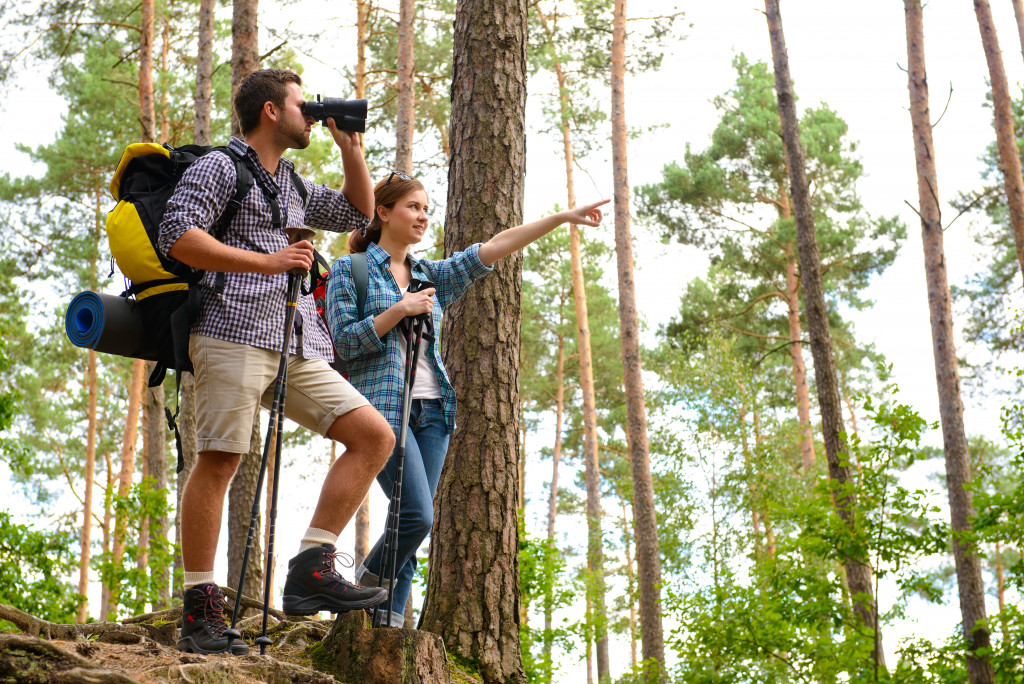• Common outdoor activities like hiking, water sports, and rock climbing can lead to accidents and injuries.
• Cuts and scrapes are the most common and can be treated with soap and water, pressure, a bandage/wrap, and antibiotic ointment/spray.
• Sprains require the RICE technique and medications for pain relief and can be prevented by doing a warm-up routine.
• To reduce the risk of injury, wear protective gear like knee and elbow pads, and warm up to prepare your body.
To those who live for adventure, the great outdoors is a place you can explore and take risks. Unfortunately, some risks come with the territory, and it’s important to be prepared in case of an accident or injury. From cuts and scrapes to broken bones, many common accidents can occur while doing outdoor activities. Here’s what you need to know about how to handle them.

Risky Outdoor Adventures
Yes, you consider yourself an expert and can navigate through almost any terrain, but even experts are at risk of accidents. Some activities that can lead to injury include:
- Hiking: Since this activity involves climbing and descending over rugged terrain, it makes sense that slips, scrapes, falls, and injuries to the feet or ankles are common.
- Water Sports: Water sports can be dangerous on a lake or the ocean. There are various potential injuries, from drowning to sprains and strains.
- Rock Climbing/Rappelling: Rock climbing requires expertise and vigilance with its challenging terrain and specific skills needed for success. Falls are common, and the resulting injuries can range from minor scrapes and bruises to serious injuries such as broken bones.
Common Accidents and How to Respond
Accidents are, unfortunately, an inevitable part of outdoor adventures. Knowing how to respond to an accident is key for safety and recovery. Here’s a look at some common accidents and what to do:
Cuts and Scrapes
Cuts and scrapes are the most common injuries that occur during outdoor adventures. Whether climbing a rock wall or biking through a rocky trail, it’s easy to accidentally scrape or cut yourself on sharp objects.
If this happens, the first step is to stop what you’re doing and assess the wound. Clean the area with soap and water if possible, then apply pressure using gauze or a clean cloth until the bleeding stops. Use a bandage or wrap around the wound for extra protection if necessary. If you don’t believe the wound is serious enough to require medical attention, you can use an antibiotic ointment or spray and a bandage to help it heal more quickly.
Broken/Loose Tooth
The risk of losing your tooth increases during an outdoor adventure. Your teeth can be seriously injured if you take a hard fall or get hit by some fast-moving object. You may also experience a loose tooth if your jawbone is damaged.
Tooth loss is a serious emergency, so it’s important to seek emergency dental care immediately. If you’re experiencing severe pain or bleeding in your mouth, an experienced emergency dentist should be able to treat the injury and provide a solution, such as putting in a bridge or implant to replace the missing tooth.
Sprains
Sprain is one of the most common issues when it comes to outdoor activities such as hiking, running, skiing, skateboarding, etc. A sprain is an injury when ligaments—the tissues that connect bones—are stretched too far or torn due to sudden movement or impact. Symptoms include pain and swelling in the affected area.
You should seek immediate medical attention if severe pain persists after 24 hours of rest; otherwise, try using RICE (Rest-Ice-Compression-Elevation) and over-the-counter medications like ibuprofen for pain relief.
Preventive Measures
Prevention is always better than dealing with the aftermath of an accident. To reduce your risk of injury, here are some basic safety tips:
To Minimize Cuts or Scrapes
Wearing protective gear is key—wear sturdy shoes, long pants, and a jacket to protect yourself from cuts or scrapes. When going on a shrubby, rocky route, you may want to invest in specialized protective gear, such as kneepads and elbow pads.
To Avoid Sprains
Make sure you’re prepared for the activity; this means having the right equipment and doing a warm-up routine that prepares your body for the task ahead. Also, pay attention to signs from your body that tell you when to rest or take a break.
To Protect Your Teeth

Be sure to wear a protective mouth guard if you’re playing sports or any activity involving fast-moving objects. It’s a good idea to wear one even when swimming, as it can help protect your teeth from the pressure of underwater diving.
No matter how careful you are, outdoor activities come with some risk of accident and injury. Knowing what to do in an emergency is key for safety, so ensure you know how to handle any potential injuries before heading out on your next adventure!
